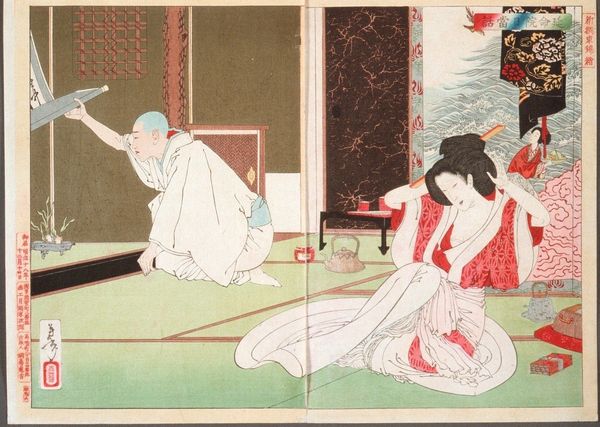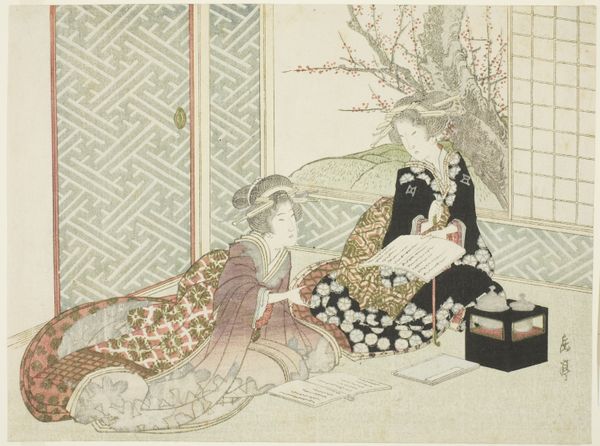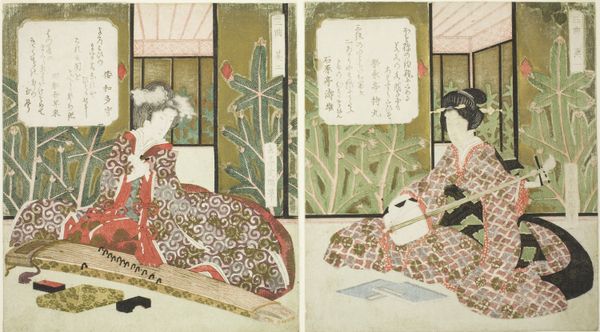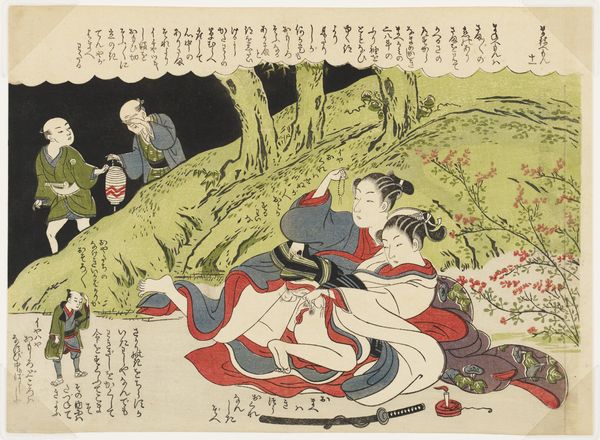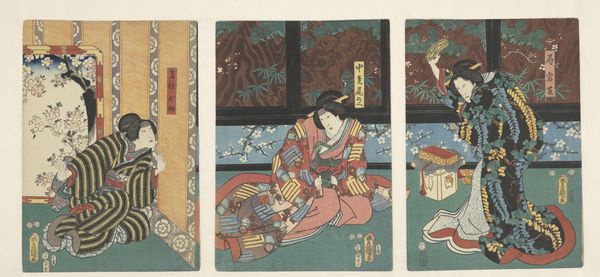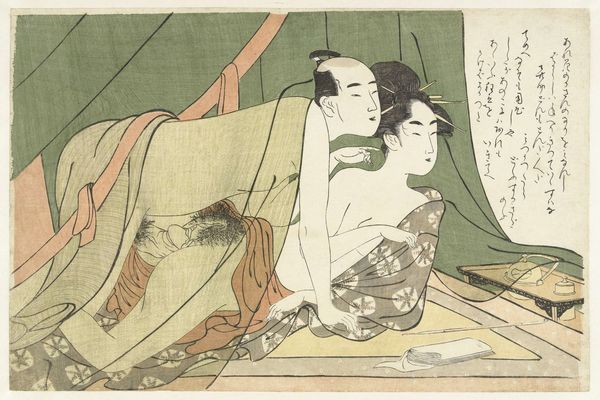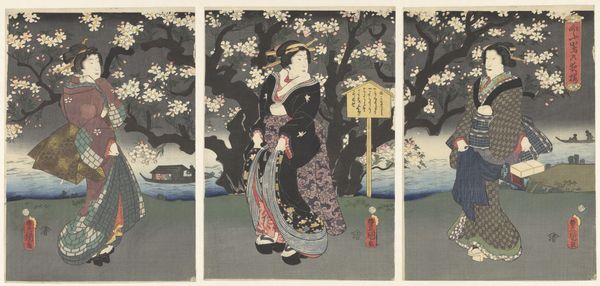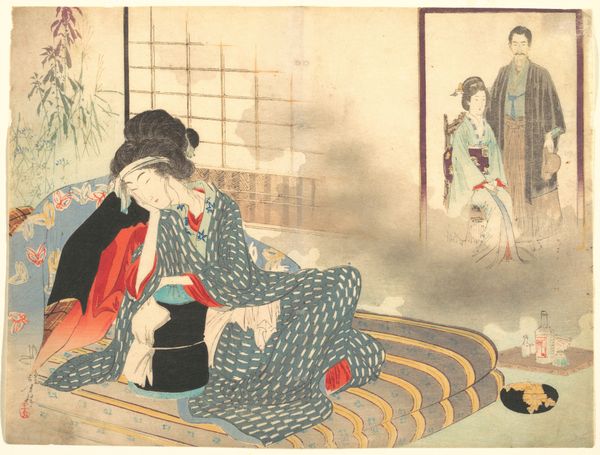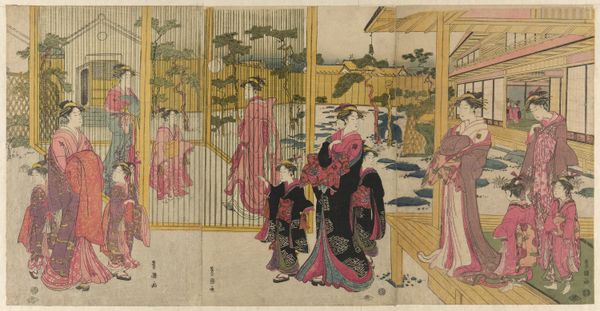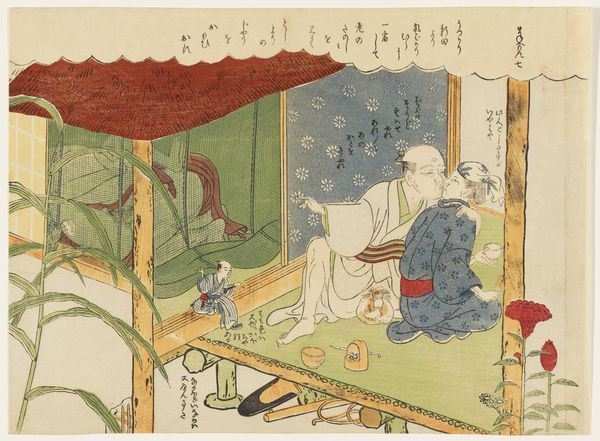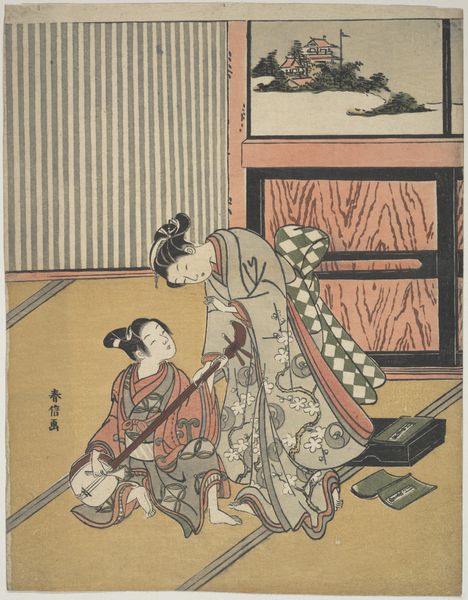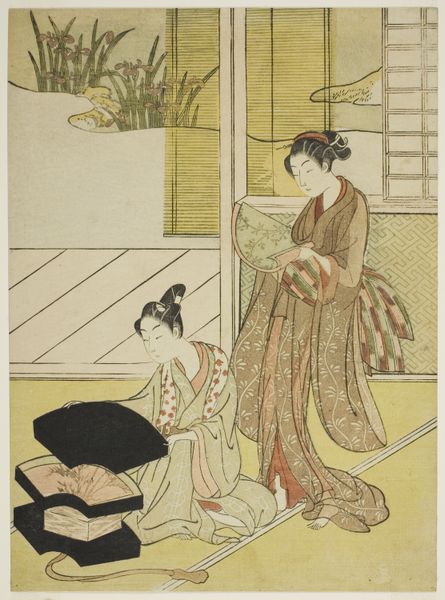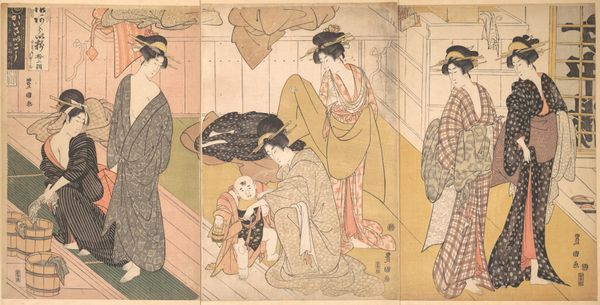
Dimensions: height 368 mm, width 748 mm
Copyright: Rijks Museum: Open Domain
Editor: So, this woodblock print from possibly 1897, titled "Hotoke bij de nonnen" by Kobayashi Kiyochika, shows a figure draped in white, surrounded by other figures in what seems like an indoor setting. The face of the central figure really strikes me as almost mask-like. What can you tell me about this piece, given its historical context? Curator: The image offers a compelling view into Meiji-era Japan and the evolving social landscape of the time. Consider Kiyochika's position as a chronicler of modernization – how might his background influence his portrayal of, seemingly, a religious figure in the company of nuns? What could this scene say about the role of religious institutions, particularly in relation to women, as Japan opened itself to Western influences? Editor: That’s interesting. I hadn't thought about it in terms of Japan's opening up to the West. Do you think that this could be related to how women are depicted in art at that time? Curator: Precisely. The image engages with, and potentially challenges, established social and cultural norms. Ukiyo-e prints were, after all, a popular medium reflecting contemporary life, but also shaping perceptions of it. Is this perhaps a commentary on piety? Or the theatricality of faith in a rapidly changing world? Consider the potential audience for this print: what message might they have taken from it? Editor: I see. So, it’s not just about what's depicted, but also about the societal context and who it was made for. It's like Kiyochika is making us think about the bigger picture of Japan at the time. Curator: Exactly. And the reception of ukiyo-e prints shifted dramatically too with the advent of photography and the change in what constituted 'art'. We really have to look at those pieces now and remember that these are complex interactions that reflect not only life in Japan at the time but, increasingly, Japan's perception on the world stage. Editor: I hadn’t considered that! Thinking about its intended audience and how it reflected societal changes really gives the artwork more depth. Curator: Indeed. It highlights how art functions within specific socio-political moments, not as a passive reflection, but as an active participant in shaping societal views.
Comments
No comments
Be the first to comment and join the conversation on the ultimate creative platform.
